Posts Tagged "Targeted Advertising"
Articles
- Best Marketing Conference Sponsorship
- What Does it Mean to Be an Exhibitor at a Conference?
- What Is the Biggest Social Media Conference?
- What Is an Innovation Conference?
- What Is a Typical B2B Event?
- What Are the Cloud Technology Events in 2025?
- Marketing Event Volunteer Opportunities: A Comprehensive Guide
- Digital Marketing Event Volunteer Opportunities Near Me
- What Does a Volunteer Do at a Conference?
- Is DigiMarCon Worth It?
- Is DigiMarCon Good?
- What is the Biggest Marketing Forum?
- What are Digital Marketing Conferences?
- Marketing Conference Exhibiting: Your Guide to Success
- Digital Summit Comparison: A Closer Look at DigiMarCon
- Digital Marketing Conference
- Digital Marketing Events: Your Guide to Success in 2025
- Marketing Conferences: Unlocking Your Business Potential in 2025
- What Is The Future of Digital Marketing in 2030?
- B2B Event Marketing Strategy: Unlocking Success For Your Business
- Why B2B Event Marketing?
- What Should a B2B Marketing Strategy Include?
- Top Marketing Conferences for 2025
- What Is the Future of Marketing in 2025?
Digital Marketing Conferences
- NORTH AMERICA
- DigiMarCon Cruise
(New Orleans, LA, USA) - DigiMarCon West
(Los Angeles, CA, USA) - DigiMarCon Northwest
(Seattle, WA, USA) - DigiMarCon Canada West
(Vancouver, BC, USA) - DigiMarCon Canada
(Toronto, ON, Canada) - DigiMarCon Canada East
(Montreal, QC, Canada) - DigiMarCon Florida
(Orlando, FL, USA) - DigiMarCon Gulf Coast
(Houston, TX, USA) - DigiMarCon Southern California
(San Diego, CA, USA) - DigiMarCon Midwest
(Chicago, IL, USA) - DigiMarCon Mid-South
(Nashville, TN, USA) - DigiMarCon Great Lakes
(Detroit, MI, USA) - DigiMarCon North
(Minneapolis, MN, USA) - DigiMarCon Central
(Kansas City, MO, USA) - DigiMarCon Texas
(Dallas, TX, USA) - DigiMarCon New England
(Boston, MA, USA) - DigiMarCon Mid-Atlantic
(Philadelphia, PA, USA) - DigiMarCon South Florida
(Miami, FL, USA) - DigiMarCon Southeast
(Atlanta, GA, USA) - DigiMarCon Central Florida
(Tampa, FL, USA) - DigiMarCon East
(New York, NY, USA) - DigiMarCon South Atlantic
(Charlotte, NC, USA) - DigiMarCon America
(Washington, D.C. USA) - DigiMarCon Northern California
(San Francisco, CA, USA) - DigiMarCon Rocky Mountains
(Denver, CO, USA) - DigiMarCon South
(San Antonio, TX, USA) - DigiMarCon Silicon Valley
(San Jose, CA, USA) - DigiMarCon Orange County
(Anaheim, CA, USA) - DigiMarCon Southwest
(Phoenix, AZ, USA) - DigiMarCon World
(Las Vegas, NV, USA)
- DigiMarCon Cruise
- LATIN AMERICA
- EUROPE
- MIDDLE EAST
- AFRICA
- ASIA PACIFIC
- DigiMarCon Hawaii & Pacific
(Honolulu, HI, USA) - DigiMarCon Asia & Japan
(Tokyo, Japan) - DigiMarCon New Zealand
(Auckland, New Zealand) - DigiMarCon Australia
(Sydney, Australia) - DigiMarCon Oceania
(Melbourne, Australia) - DigiMarCon Southeast Asia
(Singapore) - DigiMarCon India
(New Delhi, India) - DigiMarCon North Asia & China
(Shanghai, China)
- DigiMarCon Hawaii & Pacific
- VIRTUAL
Digital Marketing Blog
- What Makes DigiMarCon Stand Out (And Is It Worth It?) October 30, 2025
- Is DigiMarCon Worth Attending? A Complete Breakdown October 29, 2025
- DigiMarCon for Startups: Why Founders Shouldn’t Miss It October 29, 2025
- DigiMarCon Recap: What Went Down and What’s Next October 29, 2025
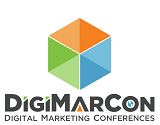


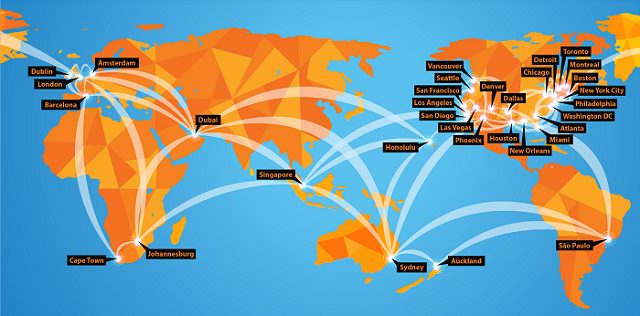

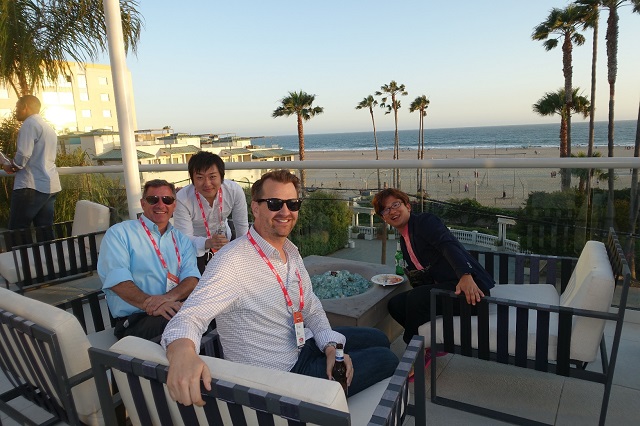
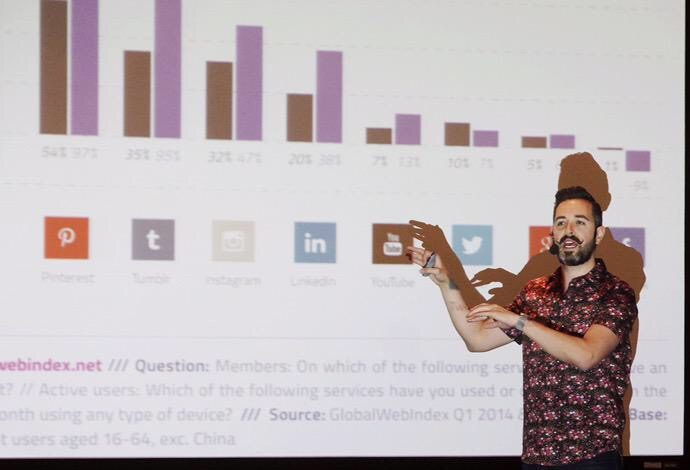
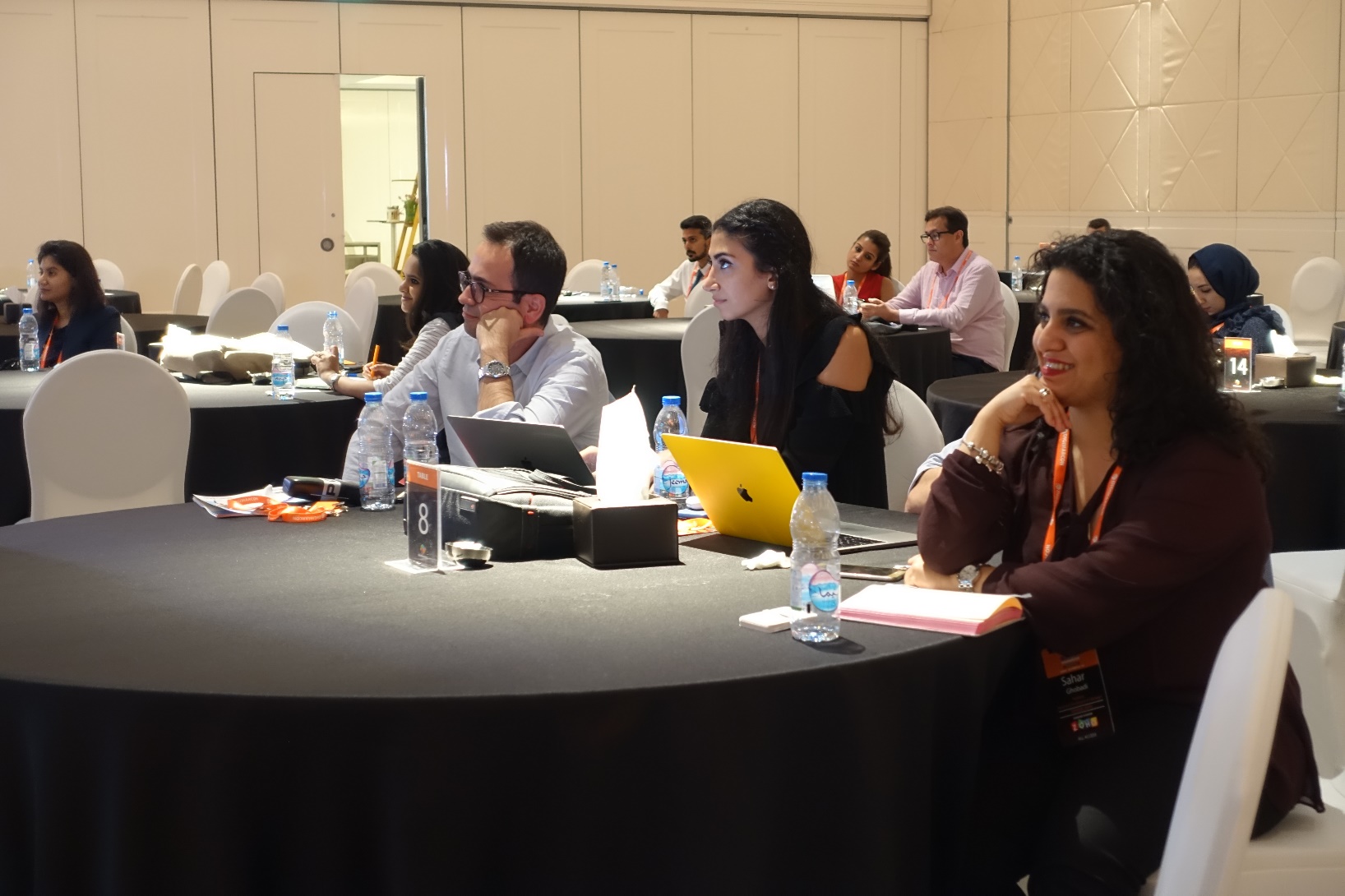

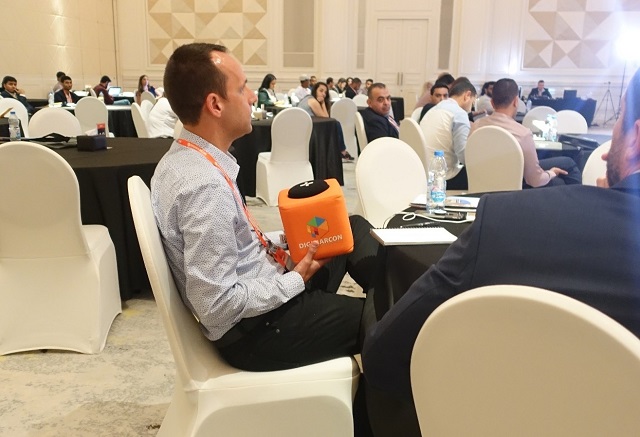

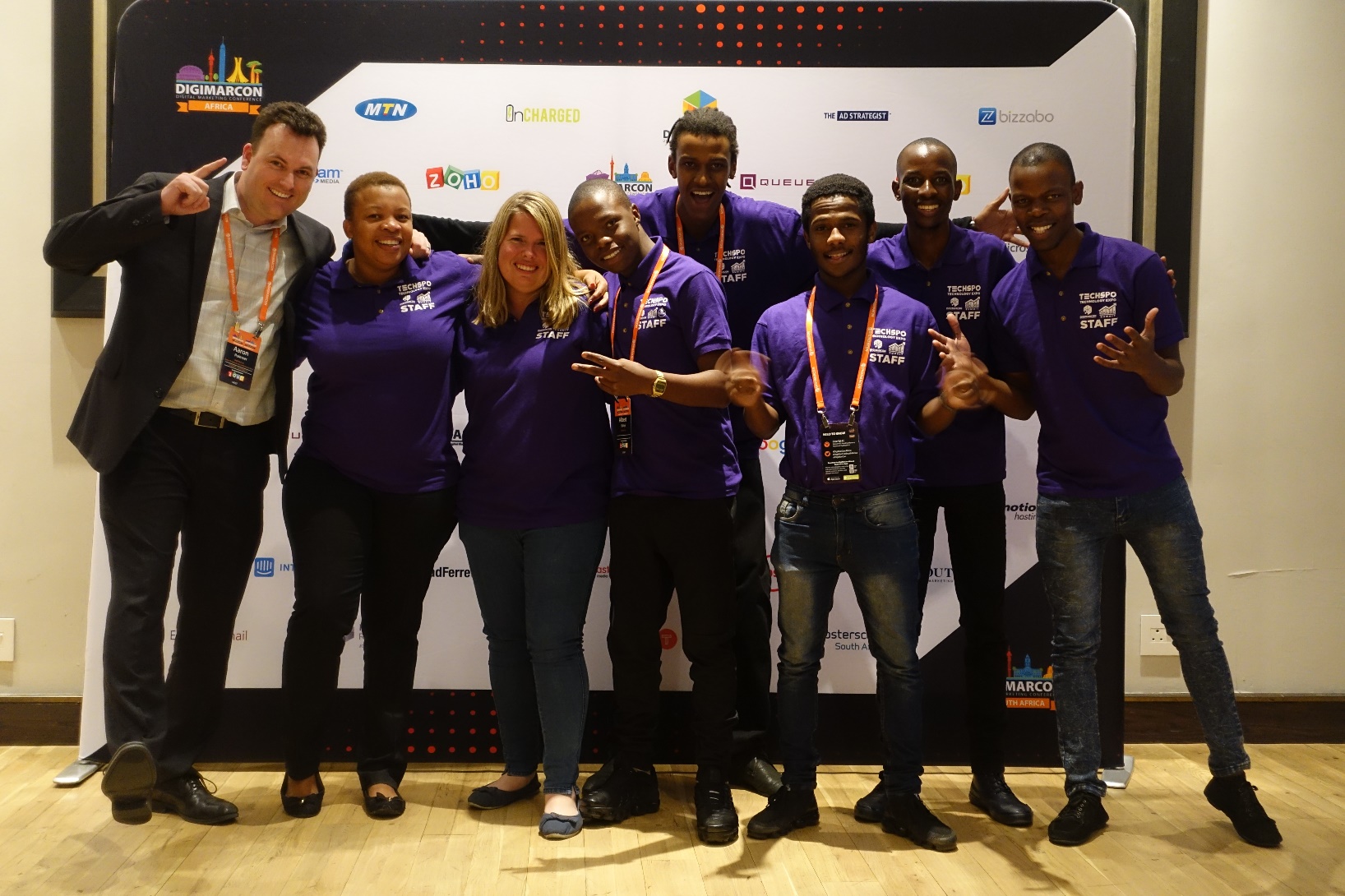





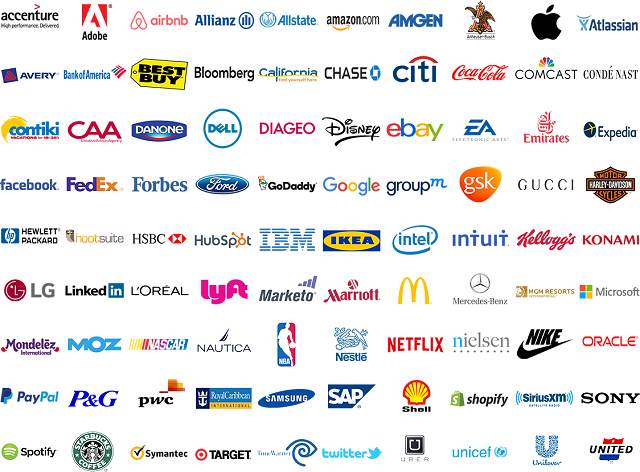















Programmatic Advertising: The Future of Digital Marketing
The digital marketing world is changing fast, thanks to programmatic advertising. This new way is changing how businesses talk to their customers.
Programmatic advertising uses smart tech like AI and machine learning. It helps marketers send messages that really speak to their audience. This makes ads better and customers happier.
Key Takeaways
What Is Programmatic Advertising?
Programmatic advertising is a big change in digital ads. It uses advanced tech to make buying ads easier and more precise.
At its heart, it uses real-time bidding (RTB) and ad tech for deals between buyers and sellers. This tech helps advertisers reach the right people better, thanks to data and algorithms.
Programmatic advertising brings many benefits. It makes ads more efficient, targeted, and measurable. Advertisers save time and get better results.
As digital marketing grows, programmatic ads will become even more crucial. It’s key for marketers to boost their ROI with targeted, data-driven ads.
The Evolution of Digital Marketing Through Programmatic Advertising
Digital marketing has grown a lot thanks to programmatic advertising. This partnership has changed how ads reach people, making them better and more efficient.
Programmatic advertising has changed online advertising a lot. It automates the ad buying process. This means ads can be bought and shown to the right people instantly. It saves a lot of time and effort for advertisers.
In display advertising, programmatic tech has made targeting more precise. Ads now reach the most relevant users. This has made display ad campaigns work better, giving advertisers a good return on their investment.
Programmatic advertising keeps improving digital marketing. It uses data and smart algorithms to make ads more effective. This helps in reaching and engaging with the right audience in a big way.
How Programmatic Advertising Works
The programmatic advertising world uses smart platforms to automate ad trading. This makes it easier for advertisers to manage their ads on different channels and devices. It ensures their ads reach the right people at the right time.
At the core of programmatic ads are Demand-Side Platforms (DSPs) and Supply-Side Platforms (SSPs). These platforms help buy and sell ad space in real-time.
Demand-Side Platforms (DSPs)
DSPs let advertisers manage their ads on various platforms. They offer a single place for advertisers to bid on ad space. This uses data and algorithms for better targeting.
Advertisers can make their ad buying easier, target better, and see better results with DSPs.
Supply-Side Platforms (SSPs)
SSPs help publishers manage and make money from their ad space. They connect publishers’ ad inventory to many buyers. This way, publishers can earn more while controlling their ads.
By combining DSPs and SSPs, programmatic ads make marketing automation and audience targeting easier. Advertisers can target their audience better, and publishers can get better ad deals.
The partnership between DSPs and SSPs makes ad trading more efficient and clear. This makes programmatic ads a key tool for marketers in today’s fast-changing digital world.
Types of Programmatic Advertising
Programmatic advertising isn’t a single solution. It comes in many types. This variety lets advertisers pick the best fit for their goals and audience.
Real-Time Bidding (RTB) is a key type. It uses ad exchanges for real-time bidding. This way, ads are targeted and priced well. Ad exchanges are key here, acting as places where ads are bought and sold.
Private Marketplace (PMP) is another type. It’s a private ad exchange where publishers choose who can bid on their space. This ensures top-quality inventory for advertisers while keeping control.
Programmatic Direct is also a form. Advertisers buy ad space directly from publishers, skipping the auction. It mixes the efficiency of programmatic with the perks of direct deals.
Programmatic advertising’s different types offer flexibility and efficiency. They help advertisers meet their marketing goals better. Knowing about these types, including ad exchanges, is key to understanding digital ads.
Advanced Audience Targeting in Programmatic Advertising
Programmatic advertising shines with its advanced audience targeting. This feature boosts the success of programmatic media buying and digital marketing.
It uses smart data and algorithms to find and connect with specific groups. This is done through various methods, like:
Advertisers can make sure their ads reach the right people. This increases the chance of getting a response. It’s a key reason why programmatic media buying is getting more popular in digital marketing.
Advanced audience targeting has many benefits. It makes ads more relevant and user-friendly. It also makes campaigns more efficient and profitable. As digital marketing keeps changing, this feature will play an even bigger role.
In short, advanced audience targeting is a game-changer for programmatic advertising. It’s changing how advertisers do programmatic media buying and digital marketing. By using data and smart targeting, advertisers can get better results from their campaigns.
Benefits of Programmatic Media Buying
Programmatic media buying has changed the digital ad world a lot. It makes advertising more efficient. This means less time and money spent on ads.
Enhanced Targeting CapabilitiesProgrammatic ads are great at finding the right people. They use ad tech to target based on many things like who they are and what they like. This makes ads more likely to work.
Some big benefits of programmatic media buying are:
Experts say programmatic ads have changed digital marketing a lot. They bring unmatched efficiency and targeting. This is thanks to the advanced ad tech behind it.
Ad tech is key in programmatic media buying. It lets ads be bought and sold fast. This makes ads more effective and reaches the right people.
In short, programmatic media buying offers many benefits. These include better efficiency, targeting, campaign tracking, and ROI. By using programmatic ads and ad tech, marketers can do better digital campaigns.
Challenges and Limitations in Programmatic Advertising
Programmatic advertising faces issues like ad fraud and regulatory rules. It’s efficient and targets well, but it has its hurdles. These can affect how well it works.
Ad fraud is a big problem. It’s important to know what it is and how to stop it.
Types of Ad Fraud
Prevention Strategies
To fight ad fraud, use advanced fraud detection tools and partner with trusted companies. Regular checks and monitoring can spot fraud early.
Following rules is another big challenge. Laws like the GDPR (General Data Protection Regulation) in Europe affect how data is used in ads.
GDPR Impact
The GDPR makes advertisers clear about data use and get user consent. This has changed how ads use data.
CCPA and Other Regulations
The CCPA (California Consumer Privacy Act) and other laws also require advertisers to follow data privacy rules.
In summary, programmatic advertising has many benefits. But, it’s key to tackle its challenges like ad fraud and following rules. This ensures it keeps growing and working well in online advertising and real-time bidding.
Current Trends in Programmatic Advertising
The digital marketing world is always changing. New trends in display advertising and marketing automation are emerging. These changes are driven by tech advancements and how people behave online.
Artificial intelligence (AI) and machine learning (ML) are becoming key in programmatic ads. They help target ads better and make them more personal. A study found that using AI and ML can boost engagement and sales.
Marketing automation is also getting more attention. It automates routine tasks, letting marketers focus on big ideas. This makes campaigns more efficient and effective.
There’s a big push for transparency and accountability in programmatic ads. Advertisers want better ways to measure how well their ads work. This is important as the industry grows.
Display advertising is evolving, and programmatic ads are key. By keeping up with trends and using AI, ML, and marketing automation, advertisers can get better results. This helps grow their businesses.
Implementing Successful Programmatic Strategies
To succeed in programmatic advertising, you need to grasp audience targeting and ad exchanges. It’s all about hitting your target audience and managing ad exchanges well.
Audience targeting is key. It lets you reach the right people with your ads. Using data and analytics, you can make ads that really speak to your audience.
Attribution models are also vital. They help you see how your ads are working. By looking at these models, you can understand what’s driving sales.
Performance Benchmarks
Setting performance benchmarks is crucial. These help you see how well your ads are doing. You can use them to make smarter choices based on data.
A top expert says, “The secret to great programmatic ads is knowing your audience and using the right models.”
By focusing on audience targeting, attribution models, and benchmarks, you can make your programmatic ads work. This leads to better results.
Conclusion
Programmatic advertising has changed the digital marketing world. It makes buying ads more efficient and effective. This is thanks to advanced audience targeting and real-time bidding.
This method has become key for marketers wanting to boost their ROI. It helps them reach their target audience better.
The rise of programmatic advertising has changed how businesses connect with their audience. It uses data and automation to send personalized ads. This makes ads more relevant and effective.
The future of digital marketing will keep evolving with programmatic advertising. New tech and data analysis will lead to more innovation. Businesses that use programmatic media buying will be ready for new trends and stay competitive.
FAQ
What is programmatic advertising?
Programmatic advertising uses technology to buy and sell online ad space. It uses real-time bidding and ad exchanges. This makes digital marketing more efficient and targeted.
How does programmatic advertising work?
It works through demand-side platforms (DSPs) and supply-side platforms (SSPs). These platforms let advertisers bid on ad space in real-time. This way, they can target their audience more precisely.
What are the benefits of programmatic media buying?
Programmatic media buying is more efficient and targets audiences better. It also improves campaign performance. These benefits help digital marketing succeed.
What are the challenges faced by programmatic advertising?
Challenges include ad fraud and following rules like GDPR and CCPA. There are also complexities in real-time bidding. Advertisers must find ways to prevent these issues and follow the rules.
How can advertisers implement successful programmatic strategies?
Advertisers can succeed by using attribution models and performance benchmarks. They should also use advanced audience targeting. These steps help optimize programmatic media buying and digital marketing.
What is the role of ad exchanges in programmatic advertising?
Ad exchanges help buy and sell ad space between different parties. They provide a platform for real-time bidding. This helps advertisers reach their target audiences more effectively.
How does programmatic advertising enhance audience targeting?
It uses advanced data and technology for better targeting. Real-time bidding and ad tech help advertisers reach their audience with precision. This makes audience targeting more effective.
Paid Search Marketing: Unlock Your Online Potential
In today’s digital world, businesses are always looking for ways to reach more people. Paid Search Marketing is a key strategy. It helps companies show up more online and get more customers.
Using digital advertising platforms, businesses can make ads that speak to their audience. This boosts brand awareness and brings in real results. It’s a must-have for businesses wanting to succeed online.
Key Takeaways
Understanding Paid Search Marketing
Paid search marketing is key in today’s digital world. It helps businesses find customers who are looking for what they offer.
The Fundamentals of Pay-Per-Click Advertising
Pay-Per-Click (PPC) advertising is a big part of paid search marketing. Advertisers pay each time someone clicks on their ad. PPC advertising works well because it targets people who are actively searching for something.
How the Auction System Works
The auction system is at the heart of PPC advertising. When someone searches for a keyword, an auction happens. Advertisers who have bid on that keyword compete. The highest bidder, along with other factors like Quality Score, decides where the ad will show up.
Cost Structures in PPC
It’s important to understand the costs in PPC to manage budgets well. Advertisers need to think about Cost Per Click (CPC), the cost of each click, and their overall budget.
How Paid Search Differs from Organic Search
Paid search and organic search are different ways to show up on search engine results pages. Organic search aims to rank higher naturally by optimizing website content. Paid search, on the other hand, involves paying for ad spots. Paid search gives quick visibility and can be very targeted.
The Evolution of Search Engine Marketing
Search Engine Marketing (SEM) has changed a lot over time. It started with simple text ads and now includes advanced targeting and ad formats. Today, SEM includes PPC, Shopping Ads, and Display Ads.
The Benefits of Paid Search Marketing for Businesses
Paid search marketing offers many benefits for businesses. It provides quick visibility, precise targeting, and measurable ROI. A good pay-per-click strategy can greatly improve a business’s online presence and bring in more targeted traffic.
Immediate Visibility and Traffic Generation
Paid search marketing lets businesses quickly appear on search engine results pages (SERPs). Unlike organic search, which takes months, paid search can start bringing traffic in hours. This fast visibility is key for businesses wanting to grab their audience’s attention quickly.
Key benefits of immediate visibility include:
Precise Targeting Capabilities
Paid search marketing offers precise targeting. Businesses can use various options to ensure their ads reach the right people at the right time.
Geographic Targeting
Businesses can target users by location. This is great for local businesses or those focused on a specific region.
Demographic Targeting
Demographic targeting lets businesses target users by age, gender, and interests. This allows for very tailored marketing campaigns.
Device Targeting
With more people using mobile devices, device targeting is key. Businesses can make sure their ads work well on desktops, tablets, or mobiles, giving a smooth experience everywhere.
Measurable ROI and Performance Tracking
Paid search marketing also lets businesses measure ROI precisely. They can track ad performance, from click-through rates to conversion rates.
Key metrics to track include:
By looking at these metrics, businesses can improve their paid search strategies. This leads to better ROI and more effective campaigns.
Major Paid Search Platforms and Their Unique Features
Businesses want to make their mark online. Knowing the top paid search platforms is key. A few big names stand out, each with special features for advertisers.
Google Ads: The Industry Leader
Google Ads is the top choice for paid search. It has unmatched reach and targeting. Its success comes from its huge network and new features.
Search Network Campaigns
Google Ads’ Search Network lets you target users searching for specific keywords. It’s great for businesses wanting to catch users ready to buy.
Display Network Opportunities
Google Ads’ Display Network is huge for visual ads. It shows ads on millions of websites and apps. It’s perfect for increasing brand awareness and reaching more people.
Microsoft Advertising (Bing Ads)
Microsoft Advertising, once Bing Ads, is a big deal too. It targets specific groups well. It’s good for reaching certain demographics.
Amazon Advertising for E-commerce
Amazon Advertising is a must for online shops. It lets you advertise to Amazon users. This boosts sales and gets your products seen more.
Other Emerging Platforms
New players are joining the paid search scene. Social media and niche networks offer new ways to target and reach people.
In short, knowing each platform’s strengths is vital for a good digital ad plan. Using these platforms well can improve your online presence, drive traffic, and increase sales.
Building a Successful Paid Search Marketing Strategy
Creating a winning Paid Search Marketing strategy needs a few key steps. You must have clear goals, know your audience, and understand your competitors. This approach helps boost your online presence and increase conversions.
Setting Clear Campaign Objectives
It’s important to set specific goals for your Paid Search Marketing campaign. These goals should match your business aims, like more website visits, leads, or sales. Having clear goals helps focus your campaign and measure its success.
Understanding Your Target Audience
Knowing who your audience is is crucial in Paid Search Marketing. You need to find out their demographics, interests, and behaviors. Targeting your ads well ensures they reach people who are likely to buy.
Competitive Analysis and Benchmarking
Doing a competitive analysis helps you see where you stand in the market. It shows you how to beat your rivals. By comparing yourself to others, you can make your campaign better.
Budget Planning and Allocation
Planning your budget is key in Paid Search Marketing. You need to decide how much to spend and where. A good budget plan means your campaigns have enough money to work well and make a profit.
Daily vs. Lifetime Budgets
When setting your budget, you have to choose between daily and lifetime budgets. Daily budgets control your daily spending, while lifetime budgets set a total cap for the campaign. Choosing the right budget depends on your campaign’s goals and how long it will run.
Seasonal Budget Adjustments
Seasonal changes can affect your Paid Search Marketing. Adjusting your budget with the seasons can help you make more money during busy times and save during slow times.
By using these steps in your Paid Search Marketing strategy, you can make a strong campaign that gets results. Always keep an eye on your campaign and make changes as needed to keep it successful.
Keyword Research and Selection for PPC Campaigns
Effective keyword research is key to a successful PPC campaign. It helps businesses find their target audience with ease. By picking the right keywords, advertisers can boost their campaign’s visibility and ROI.
Identifying High-Value Keywords
Finding high-value keywords requires a deep dive into audience behavior and industry trends. Tools like Google Keyword Planner and SEMrush are great for this. They offer insights into search volume, competition, and costs.
Understanding Keyword Match Types
Keyword match types show how closely a search must match a keyword to show an ad. Knowing these types is key for better campaign optimization.
Broad Match
Broad match keywords have the widest reach. They can show ads for searches with misspellings, synonyms, and related terms.
Phrase Match
Phrase match keywords strike a balance between reach and specificity. They show ads for searches with the keyword phrase, possibly with more words.
Exact Match
Exact match keywords are the most specific. They only show ads for searches that closely match the keyword.
Negative Keywords and Their Importance
Negative keywords are vital for avoiding irrelevant searches. This saves budget and boosts campaign efficiency. Regularly check search terms reports to find potential negative keywords.
Tools for Effective Keyword Research
Many tools help with keyword research, including Google Keyword Planner, Ahrefs, and SEMrush. These tools offer insights into keyword performance, competition, and opportunities.
Creating Compelling Ad Copy and Landing Pages
In the world of online ads, standing out is key. You need more than just the right keywords. Your ad copy must grab attention, and your landing pages must meet expectations. A good pay-per-click strategy means making ads that draw people in and landing pages that convert.
Writing High-Converting Ad Headlines
Creating headlines that work means knowing what your audience likes. Use action words and include keywords to get more clicks.
Crafting Persuasive Ad Descriptions
Ad descriptions should keep the interest alive. Here’s what to include:
Including Strong Calls-to-Action
A good call-to-action (CTA) is key to getting people to act. Use CTAs like “Sign Up Now” or “Get Started Today” to guide users.
Highlighting Unique Selling Propositions
Your ad should clearly state what’s unique about your offer. This could be a special deal, a unique feature, or better service.
Designing Landing Pages That Convert
Landing pages should aim for one thing: conversion. Make sure your landing page matches your ad, is easy to use, and has a clear call-to-action.
A/B Testing for Continuous Improvement
A/B testing is vital for making your ads and landing pages better. By trying different versions, you can see what works best and boost your conversion rates.
By focusing on these areas, businesses can make their online ads more effective. This leads to higher conversion rates and better returns on investment.
Advanced Paid Search Marketing Techniques
Advanced paid search marketing is key to boosting ROI and beating competitors online. As the digital world changes, marketers need smart strategies to make their campaigns better.
Remarketing and Audience Targeting
Remarketing helps businesses reach out to users who’ve shown interest before. This can lead to more sales. By focusing on specific groups, ads can speak directly to potential buyers. Effective remarketing strategies use data on user behavior, like what they’ve looked at or added to cart.
Ad Extensions to Enhance Performance
Ad extensions add extra details to ads, making them more visible and appealing. They help improve ad performance and get more people to take action.
Sitelink Extensions
Sitelink extensions link to specific pages on a website. This makes it easier for users to find what they’re looking for, boosting click rates.
Callout Extensions
Callout extensions highlight special offers or benefits. They make ads more attractive to potential customers.
Structured Snippet Extensions
Structured snippet extensions give more context by showing specific details about a business. This could be product categories or services.
Dynamic Search Ads and Automated Bidding
Dynamic search ads create ad headlines and landing pages based on website content. This covers more search queries. Automated bidding, like Google Ads’ Smart Bidding, uses AI to set bids for each auction. This maximizes ROI.
Automated bidding cuts down on manual work while boosting campaign performance. It uses past data and current signals to adjust bids as needed.
Local PPC Strategies for Brick-and-Mortar Businesses
Local PPC is vital for businesses with physical stores. It attracts nearby customers. By targeting local keywords and using geo-targeting, stores can get more foot traffic and sales.
By using these advanced techniques, businesses can improve their online ads, increase conversions, and stay ahead in the digital world.
Measuring and Analyzing Your Paid Search Performance
It’s key to measure and analyze Paid Search campaigns well to hit marketing goals. To boost your SEM, knowing how to measure performance right is crucial.
Essential PPC Metrics to Track
To see if your Paid Search Marketing is working, watch key performance indicators (KPIs). These metrics show how well your campaigns are doing and where you can get better.
Click-Through Rate (CTR)
CTR shows how many people click on your ad after seeing it. A high CTR means your ad is catching the eye of your audience.
Cost Per Click (CPC)
CPC is the cost of each ad click. Keeping an eye on CPC is key to a profitable campaign, as it affects your budget.
Conversion Rate
The conversion rate shows how many people do what you want after clicking your ad. This metric is key to seeing if your landing pages and ad targeting are working.
Cost Per Acquisition (CPA)
CPA is the total cost of getting one customer. It’s important for checking if your Paid Search campaigns are worth it.
Setting Up Conversion Tracking
To really measure how your campaigns are doing, you need to set up conversion tracking. This means putting a tracking code on your website to watch valuable user actions.
Using Analytics to Inform Strategy
Analytics tools give you deep insights into your Paid Search performance. By looking at user behavior data, you can make smart choices to better your campaigns and ROI.
Attribution Models for Paid Search
Attribution models help you see how different touches lead to conversions. Picking the right attribution model is key to accurately measuring your Paid Search impact.
By measuring and analyzing your Paid Search well, you can fine-tune your marketing strategy. This will lead to better campaign results and reaching your business goals.
Common Paid Search Marketing Mistakes to Avoid
Effective Paid Search Marketing means avoiding common pitfalls. These mistakes can hurt even the best campaigns. By knowing and avoiding these errors, businesses can boost their PPC advertising and get better results in search engine marketing.
Neglecting Campaign Structure
A good campaign structure is key for PPC success. Without it, you might face confusion, waste, and budget issues. Make sure your campaigns are well-organized, with clear ad groups and focused keywords.
Ignoring Quality Score Factors
Quality Score is vital for your PPC campaign’s success. If you ignore its factors like ad relevance and click-through rate, you’ll pay more and rank lower. Keep an eye on these and work to improve them to keep your Quality Score high.
Inadequate Budget Management
Managing your budget well is crucial for PPC success. If you don’t allocate enough, your campaigns might stop too soon or miss big chances. Check your budget often and adjust it to keep your campaigns running well.
Failing to Optimize for Mobile Users
More people use mobile devices now, so ignoring mobile users can hurt your campaign. Make sure your ads and landing pages work well on mobile. Also, use mobile-specific bids to get the best return on investment.
Overlooking Competitor Activities
It’s important to watch what your competitors do in search engine marketing. If you ignore their moves, you might fall behind. Keep up with their strategies and adjust yours to stay ahead.
By avoiding these mistakes, businesses can greatly improve their PPC advertising. This leads to more success in their search engine marketing efforts.
Conclusion: Maximizing Your Paid Search Marketing Investment
Paid Search Marketing is a strong tool for businesses to boost their online presence. It helps by understanding how pay-per-click ads work and using big search platforms. This way, businesses can get more people to see and visit their sites right away.
To get the most out of Paid Search Marketing, keep improving your ads. Check your keywords, ad text, and landing pages often. Make sure they match your goals and speak to your audience.
Running successful online ads needs constant care and improvement. Keep learning about the latest in Paid Search Marketing. This helps businesses get more value from their ads and see better results online.
FAQ
What is Paid Search Marketing, and how does it differ from organic search?
Paid Search Marketing means creating online ads that you pay for each click. It’s different from organic search, which uses SEO to rank higher. With Paid Search, businesses can bid on keywords to show their ads more often.
How do I determine the most effective keywords for my PPC campaign?
Use tools like Google Keyword Planner, SEMrush, or Ahrefs to find good keywords. These tools show search volume, competition, and cost. Knowing about keyword match types helps target better.
What is the importance of Quality Score in Google Ads, and how can I improve it?
Quality Score measures your ads, keywords, and landing pages. A high score means lower costs and better ad spots. Improve it by making ads relevant, using the right keywords, and having a good landing page.
How can I optimize my Paid Search campaigns for better ROI?
Check your keyword, ad, and landing page performance often. Use precise targeting and ad extensions to boost your ads. This makes your campaigns more effective.
What are some common mistakes to avoid in Paid Search Marketing?
Don’t ignore campaign structure, Quality Score, budget, mobile optimization, or competitor analysis. Keep an eye on your campaigns to avoid these mistakes and improve your results.
How do I measure the success of my Paid Search Marketing campaigns?
Track important metrics like CTR, CPC, conversion rate, and CPA. Use analytics tools to guide your strategy. This helps optimize your campaigns for better results.